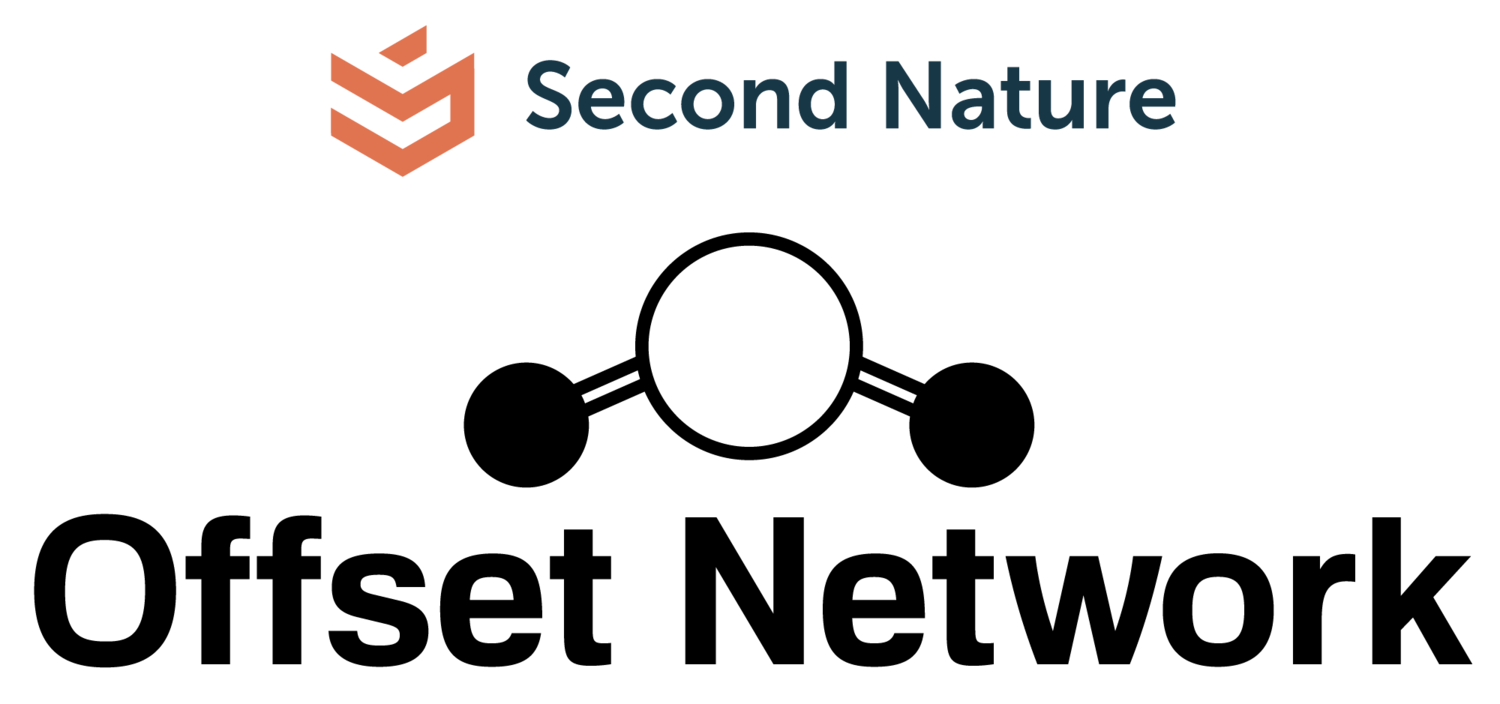Please Note: The Offset Network will be shifting to Project Type Focus Initiatives effective fall 2023. This means our resources will be directed toward project development of specific carbon offset project types for dedicated periods of time. Our first focus initiative is Improved Forest Management (IFM). Campuses interested in IFM project development or protocol work are invited to participate. Click here for more information.
If you have an idea for a project type other than IFM for your campus, feel free to continue to use the resources below, and reach out if you’d like support. The Offset Network will consider support of project types outside of the IFM focus initiative on a case by case basis. Email mleigh@secondnature.org to inquire.
Offsets are generated via offset projects, and offset projects are dictated by offset protocols. Anyone wanting to generate offsets must identify an existing protocol or develop a new one, and then design the project to the protocol’s methodology. On the voluntary market, there are many protocols to choose from, however even if your project aligns with an existing protocol, the cost of verifying offsets that the project generates through a traditional ISO-accredited third-party verifier may be prohibitive. This is why peer-reviewed offsets are novel.
The Offset Network was created to define the structures and processes for developing Peer-Reviewed Offsets. Peer-Reviewed Offsets are verified by qualified peer institutions rather than the traditional, ISO-accredited third-party verifiers. These projects can either follow an existing accepted carbon-reduction protocol (such as those approved by the Verified Carbon Standard (VCS) or the Climate Action Reserve (CAR), among others) or, these projects can follow a new, university-developed protocol that has been approved for use through the Offset Network.
Steps for Generating Peer-Reviewed Offsets:
1. Project Idea Generation
The project developer should work with stakeholders on the campus and/or in the community where you may want to develop the project. What types of carbon-reducing activities will you employ? Who will be responsible for this project? What are the co-benefits? See the Project Plan Template for clues as to what kind of planning needs to be considered as an offset project takes shape.
2. Protocol Selection: Choose a pathway
Select a protocol that aligns with the project idea by following one of 2 pathways:
a) TRADITIONAL PATHWAY: Schools can select a protocol from any of the existing major carbon programs, or from the protocols approved for use through the Offset Network. Find existing protocols.
OR
b) INNOVATIVE PATHWAY: If you can’t find an applicable protocol for your project idea, you can develop a new protocol and seek approval through the Protocol Development Pathway. We suggest you connect with Offset Network Executive Committee members to discuss new ideas. You can also email mleigh@secondnature.org for more information.
3. Develop the Project Plan and submit it for review by the OFFSET NETWORK EXECUTIVE Committee
The Project Plan should briefly outline how you plan to execute your project. Include the protocol you plan to use. Provide a description of your idea, including how you will demonstrate that your project fulfills protocol requirements, how you will determine additionality, and how you will quantify emissions reductions. See the Project Plan Template.
4. The EXECUTIVE COMMITTEE reviews the Project Plan
The Executive Committee reviews the project plan and determines the project’s eligibility for the Offset Network Program. The Executive Committee will give you feedback and ideas to improve your project, and potentially identify subject-matter experts to help with particularly technical parts of the project.
5. Complete the Project Description Document (PDD) and develop the project
Once the Executive Committee reviews the Project Plan, you should proceed to in depth project development. This includes completing the Project Description Document, which includes all details about your project. See the PDD Template.
6. Peer Validation & Verification
The initial project evaluation is typically called the validation. Validation prioritizes project boundaries, additionality, the assessment of information flows, and ensuring that the project fulfills all protocol requirements. Subsequent verifications focus on the accuracy of calculated net GHG impact as well as continued fulfillment of protocol requirements. Depending on the type of project, validation and the first verification may be performed together.
The project developer should identify an eligible institution to complete the Peer Validation and/or Verification, and reach out to the Executive Committee to initiate the process. If needed, the Executive Committee can also help identify qualified institutions to complete the Peer Validation and/or Verification.
7. Validation/Verification Report Review
The Executive Committee will review the reports completed by the Peer Verifiers to ensure that all requirements are fulfilled and the reports meet a high standard.
8. Subsequent Peer Verification
Each time a project developer wishes to issue new carbon offsets, they need to undergo a new round of Peer Verification. The project developer should fill out a monitoring report with details on emissions reductions, which the Peer Verifier will review for accuracy. Depending on the type of project, Peer Verifications may be completed yearly, every 5 years, every 10 years, etc. Reach out to the Executive Committee to help coordinate this process.
The flow chart below outlines the general pathways to develop peer-reviewed offsets from both new and traditional protocols:


